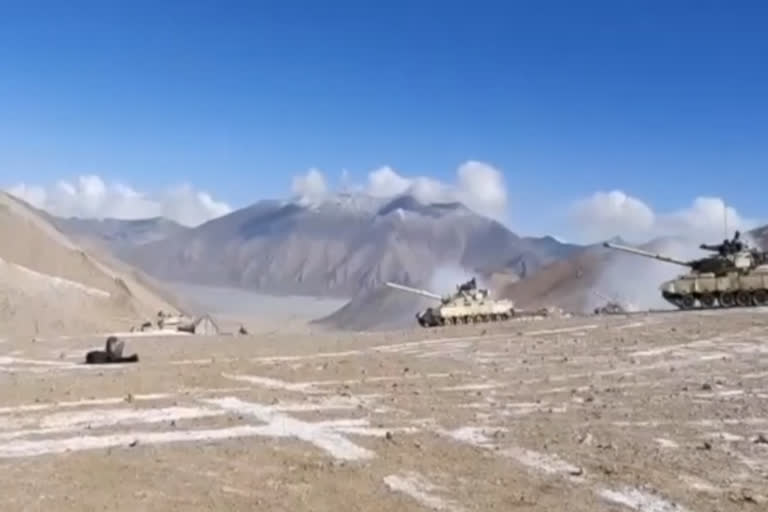Hyderabad: As the frontline troops of China and India at the south and north banks of the Pangong Lake in eastern Ladakh have started disengagement from Wednesday, here is a report on how both sides reached a breakthrough after rounds of talks.
On June 06, 2020: The first round of talks lasted 7 hours
India demands: The Indian side, while asserting that it was upgrading infrastructure well within its own territory, asked the People’s Liberation Army (PLA) to adhere to bilateral agreements and border management protocols, including specific provisions in the Border Defence Cooperation Agreement of 2013, sources said. PLA will have to withdraw its troops who intruded into Indian territory at four-five confrontation sites at Pangong Tso, Gogra-Hot Springs area and Galwan Valley region.
Outcome:Both sides agreed to peacefully resolve the situation in the border areas in accordance with various bilateral agreements,” the ministry of external affairs said.
On June 22, 2020: TheSecond round of talks spanned for 11 hours
India demands: India pressed for the withdrawal of Chinese troops from Indian territory in the Pangong Tso area of eastern Ladakh, India strongly reiterated its demand for restoration of status quo as it existed in mid-April, which would involve People’s Liberation Army (PLA) troops pulling back from the “Finger 4 to 8” (mountainous spurs separated by an 8-km distance) area on the northern bank of Pangong Tso as well as de-inducting its military build-ups in areas facing the Galwan Valley, Gogra-Hotsprings, Depsang and Chushul in eastern Ladakh.
Outcome: India and China agreed on a gradual and verifiable disengagement from their over 50-day troop confrontation in different areas of eastern Ladakh, which will eventually lead to the two sides also thinning out their massive military build-up along the 3,488km Line of Actual Control.
On June 30, 2020:Third round of talks which went for 12 hour
India demands:India asks China to adhere to the broad de-escalation and disengagement plan of June 22, with gradual, verifiable and mutual troop pullback from the confrontation sites in eastern Ladakh, followed by reduction in the rival military build-ups along the Line of Actual Control (LAC). In particular asked the PLA to pull back from the ‘Finger-4 to 8’ stretch (mountainous spurs separated over a distance of 8 km) on the north bank of Pangong Tso, ‘Patrolling Point-14 (PP-14)’ in Galwan Valley and the ‘Bottleneck’ area in Depsang Plains of eastern Ladakh.
Outcome:India, China agree to restart Galwan, Hot Springs pullback, But Generals Fail To Resolve Face-Off At Pangong Tso.
On July 14, 2020:The fourth round of talks went for 14 and half hours
India demands:India presses for the restoration of the status quo as it existed before PLA soldiers intruded into eastern Ladakh at multiple locations in a well-planned operation in early-May 2020.
India also asked for a time-bound road map for deinduction of the around 30,000 troops each amassed by the two sides, along with artillery guns, tanks and other heavy weaponry, in the ‘depth areas’ along the 1,597-km frontier in eastern Ladakh.
Outcome:The two sides took back each other’s proposals to their politico-military hierarchies for a review and authorisation to finalise a road map for phase-II of the proposed de-escalation plan after concrete disengagement is first achieved on the face-off sites, said top government sources.
On August 02, 2020 : 5th round of talks went for 11 hours
India demands:The Indian army has categorically conveyed to China’s PLA at the fifth round of military talks it will not compromise on India’s territorial integrity, and clearly said disengagement of troops from Pangong Tso and a few other friction points in eastern Ladakh should be completed at the earliest.
